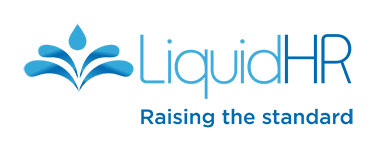Christmas Shutdown, Holiday Hiring & Work Parties: A Practical Guide for Australian Employers
As the festive season approaches, many Australian businesses are planning three key things:
- A Christmas shutdown period
- Whether to recruit in December–January
- How to run a Christmas party without HR headaches
This guide brings all of that together in one place, so you can finish the year compliant, prepared and (mostly) drama-free.
Christmas Shutdowns: What Employers Need to Know
What Is a Christmas Shutdown?
A Christmas shutdown (or annual shutdown) is a period over the festive season when a business temporarily closes operations.
During this time, employers may direct employees to take annual leave, but only if this is allowed under:
- A Modern Award
- An Enterprise Agreement
- An employment contract
Getting this wrong can create underpayment issues, disputes, and compliance risks, so it’s worth setting it up properly.
Fair Work Rules & Legal Framework
The Fair Work Act 2009 (Cth) sets the overall framework, but the specific rules about shutdowns usually sit in:
- Modern Awards
- Enterprise Agreements
- Contracts / policies
Fair Work’s overview of end-of-year entitlements:
Key points:
- Employers cannot force annual leave unless permitted by an award/agreement/contract.
- Where shutdowns are allowed, directions must be reasonable and follow the Award rules.
Employers should also ensure they’re still meeting minimum entitlements under the National Employment Standards (NES).
New Shutdown Rules for Awards
Fair Work has introduced new, consistent shutdown rules across many awards.
Fair Work summary of the changes:
Common features now include:
- A minimum 28 days’ written notice of a shutdown (unless the award requires more)
- Ability for employers to direct employees to take annual leave during a shutdown where the award allows
- Rules around insufficient annual leave (e.g. leave in advance or unpaid leave – depending on the award)
- A requirement that directions be reasonable, taking into account operational needs and employee circumstances
Because the detail varies award by award, it’s essential to check the award that applies to your workforce.
Directing Employees to Take Annual Leave
Fair Work’s specific guidance on shutdown leave directions:
To lawfully direct annual leave in a shutdown, employers should:
- Confirm that the relevant award or agreement allows shutdowns and leave directions
- Provide written notice of the shutdown and the leave requirement
- Ensure the length and timing of the shutdown is reasonable
- Apply rules consistently to eligible employees
When Employees Don’t Have Enough Leave
If an employee doesn’t have enough accrued annual leave to cover the whole shutdown, employers may (depending on the award):
- Allow the employee to take annual leave in advance
- Agree to unpaid leave for the balance
- In some cases, use another type of leave (e.g. long service leave), if the employee is eligible and agrees
What employers can’t do:
- Force employees to take annual leave if the award/EA/contract doesn’t allow shutdowns
- Terminate employment simply because of a shutdown
- Apply arrangements inconsistently or unfairly between employees in similar roles
All agreements (e.g. leave in advance, unpaid leave) should be documented in writing.
Notice Requirements
Most awards now require at least 28 days’ written notice of a shutdown. Some may require more.
A good shutdown notice typically includes:
- Dates of the shutdown
- Which employees or teams are affected
- How annual leave will be handled
- Options for employees who don’t have enough leave
- Who to contact with questions
Clear, early communication will reduce confusion and complaints.
Best Practice Tips for Employers
To manage a Christmas shutdown smoothly:
- Check the relevant Award / Agreement
- Update policies and contracts
- Make sure your shutdown process aligns with current Fair Work rules.
- Make sure your shutdown process aligns with current Fair Work rules.
- Communicate clearly and early
- Provide written notice well ahead of time.
- Explain leave options and what happens if balances are low.
- Provide written notice well ahead of time.
- Document decisions
- Keep records of leave directions and agreements (especially leave in advance).
- Keep records of leave directions and agreements (especially leave in advance).
- Plan operationally
- Make sure key tasks (payroll, support, emergencies) are covered before and after the shutdown.
Christmas Shutdown FAQs
Can employees refuse to take leave for a shutdown?
Generally, if the award allows shutdowns and the employer has followed the rules (including notice), employees cannot unreasonably refuse.
What happens with casual employees?
Casuals are usually not entitled to paid leave, and may simply not be rostered during the shutdown. This is not a termination.
Is a “shutdown” the same as a “stand down”?
No – a shutdown is a planned closure (e.g. Christmas). A stand down is usually due to reasons beyond the employer’s control (e.g. breakdowns, natural disasters).
Can we use a mix of annual leave and unpaid leave?
Yes, where the award permits it and the employee agrees to any unpaid component.

Recruitment in December and January: Pros, Cons, and Key Strategies for Australian Businesses
Recruiting during December and January in Australia presents unique opportunities and challenges for businesses. These months, spanning the holiday season and the start of a new year, offer distinct advantages and disadvantages that vary depending on industry needs and hiring strategies. Here’s a combined look at the pros and cons of recruiting during this period.
Advantages
Access to Passive and Motivated Job Seekers
December sees many individuals reflecting on their careers and becoming open to new opportunities, whilst the end of January brings a surge of motivated job seekers driven by New Year’s resolutions.
Less Competition in December
Many businesses hold off on hiring during December, giving proactive recruiters a chance to secure top talent with less competition.
Fresh Candidate Pool in January
The second half of January typically brings a fresh wave of applicants, as people actively seek new roles at the start of the year.
Immediate Availability
Some candidates finish up roles at the end of the calendar year, making them available to start immediately, which can be especially useful for roles that need filling quickly.
Strategic Timing
Recruiting during these months ensures new hires are ready for the start of the calendar year or upcoming projects, helping businesses hit the ground running.
Holiday Networking Opportunities
Festive season events and industry gatherings provide informal opportunities to connect with potential candidates.
New Budgets and Hiring Plans
Some businesses start new budget cycles in January, enabling clear recruitment planning and the creation of new roles.
Disadvantages
Candidate and Staff Availability
December and January sees many candidates and internal staff on annual leave, making it harder to schedule interviews, manage applications, or onboard new hires.
Holiday Distractions
The festive season and summer holidays can divert candidates’ attention, leading to slower application responses or delayed decision-making.
Increased Competition in January
The second half of January is a peak recruitment month, meaning businesses face stiff competition for top talent, with candidates often juggling multiple offers.
Higher Candidate Expectations
January job seekers may have ambitious salary and role expectations, requiring businesses to adjust recruitment budgets or offer attractive packages.
Limited Onboarding in December
Starting new hires in December can result in a disjointed onboarding process due to office closures or reduced staff availability.
Delayed Start Dates
Candidates recruited in January may require additional time to start new roles, whether due to prior commitments, notice periods, or extended holiday plans.
Key Considerations
- Industry-Specific Needs: Industries like retail, tourism, and hospitality may benefit from hiring in December to manage seasonal demand, while others may focus on January to align with new budgets or strategic goals.
- Communication and Planning: Clearly outline timelines for applications, interviews, and start dates to manage expectations during the holiday season.
- Flexible Recruitment Processes: Adapt your strategies to accommodate slower activity in December and the heightened competition of January.
Conclusion
Recruiting in December and January offers a mix of advantages and challenges. While December provides opportunities to stand out with less competition, it also comes with logistical hurdles. January brings a larger, motivated candidate pool but increased competition. By understanding the dynamics of each month and tailoring your recruitment strategy accordingly, businesses can effectively navigate this unique period and secure the best talent for their needs.

A Christmas Party NOT to Remember!
Work Christmas parties are a staple of the Australian corporate calendar—an opportunity to celebrate achievements, foster camaraderie, and enjoy a well-earned break from the grind. But sometimes, when the drinks flow and inhibitions fade, these gatherings can take a turn for the chaotic.
The “Christmas Chaos” Case Study
The Scene:
An Australian marketing agency throws its annual Christmas bash at a swanky rooftop bar in Sydney. With an open bar, a DJ blasting 80s classics, and a karaoke machine in full swing, the atmosphere is festive, if not a little rowdy.
The Incident:
Let’s introduce our key players:
- Greg from Sales, who arrived in a Santa suit and had one too many margaritas.
- Karen from Accounts, known for her love of karaoke and fiery debate skills after a glass of red.
- The HR Manager, tasked with making sure the party remained “on brand.”
The night took a turn when Greg decided to belt out “Livin’ on a Prayer” while standing on a table. Karen, unimpressed with his performance, heckled him loudly, sparking a heated exchange that culminated in Greg declaring himself “the real boss of this company” and accidentally toppling a Christmas tree while gesturing emphatically.
Later, fuelled by liquid courage, Greg sent a company-wide email from his phone, declaring his undying love for his manager (who was mortified) and suggesting radical changes to the office snack policy.
The HR Manager’s night ended with her playing mediator between Greg, Karen, and several other staff members who had opinions on everything from the karaoke song queue to office seating arrangements.
The Aftermath:
The following Monday, the HR Manager issued a sternly worded memo reminding staff of the company’s code of conduct. Greg was asked to take a few days of unpaid leave and attend a workshop on appropriate workplace behaviour. Karen received a warning for her part in escalating the situation. The company also cancelled open bars for future events, opting instead for drink tickets.
Lessons Learned: How to Avoid a Christmas Party Disaster
- Set Clear Expectations in Advance
- Before the party, communicate the company’s expectations regarding behaviour. A friendly reminder about the workplace code of conduct and appropriate behaviour can set the tone without dampening the mood.
- Limit Alcohol Consumption
- An open bar is often a recipe for chaos. Instead, consider a drink ticket system to encourage responsible drinking and avoid Greg-level catastrophes.
- Choose Activities Wisely
- While karaoke can be fun, it can also spark unexpected rivalries. Opt for team-building activities or entertainment that doesn’t encourage competitive or divisive behaviour.
- Designate Party Moderators
- Assign managers or HR representatives to discreetly oversee the event and intervene if things start to get out of hand.
- Encourage Responsible Use of Technology
- Remind employees that work emails, group chats, and social media posts during the party are still considered workplace behaviour. Greg’s infamous email could have been avoided with a quick “think before you send” reminder.
- Provide Transport Options
- Ensure everyone gets home safely by organising taxis, ride-shares, or buses. This reduces the chances of incidents after the party and demonstrates your commitment to employee wellbeing.
- Follow Up Promptly
- If an issue does occur, address it professionally and promptly. Avoid singling anyone out publicly but ensure those involved understand the consequences of their actions.
Final Thoughts
While this case study may bring a smile, it underscores the importance of planning work Christmas parties carefully. Striking a balance between fun and professionalism ensures everyone has a good time without HR needing to step in for damage control.
After all, the goal is to end the year on a high note—not tangled in tinsel and disciplinary action!

Human Resources Hub Updates
We have updated our last batch of documents for 2025 which will be available for our retained clients to view in the HR Hub from December.
The end of year focus has been on our HR guides, with 16 updated inline with new legislation and best practice. These include:
- Casual Conversion eBook
- Parental Leave Guide
- Personal, Carers and Compassionate Leave
- Sexual Harassment
- Remote Working Toolkit for Employers
- Fixed Term Contract Compliance Guide
Liquid HR is a leading HR consulting firm helping businesses of all sizes to navigate the complexities of human resource management, while providing tailored HR services based on their unique requirements, including HR Outsourcing, Recruitment and HR Advisory Services.
With offices in Melbourne, Sydney and Brisbane, we work with businesses across Australia.
For more information, please contact us on 1300 887 458 and speak with one of our HR Consultants.











